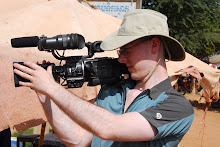Somehow, remarkably, we all have the image of God but don’t.
Maybe there is some sort of ratio for how much of God’s image remains within us. Perhaps that “image” is only a resemblance as in a human family’s lineage, like the way I resemble my father; I retain features and characteristics while possessing my own unique drives and sociological imperatives
Interestingly, on page 71, Wittmer declares that the planet we currently reside upon will be “restored to its original goodness.” Does that mean that in the new Jerusalem there will be a reformation of earth to its pre-flood state, or will there be a complete transformation to a state that can withstand the presence of God himself that is altogether different from anything we have ever known?
Now then, we are created in God’s image; in the image of God are we created. The deep ramifications of this statement may never truly be understood. I am comfortable at this stage in my faith journey with the idea that the same God who sovereignly governs the heavens also chose to use as a proxy something that could simultaneously govern this planet and innately identify with it. Analogously (and imperfectly) it would serve only a utilitarian function (at best) to have a ruler govern a city but care nothing for the needs of the people. Likewise, said city would engage in hedonistic utilitarianism before dissolving into anarchistic nihilism if not for the intervention of responsible leadership (i.e., an outside source) capable of identifying with the people on a servant-level, loving them, reflecting greater ethical values that support the common good, and possessing the dominion (presence of nonviolent force; charisma) necessary to fulfil its political aims. To bring this back to our discussion, unfortunately, our present humanness struggles with all its might against the things that are best for it. We seem to naturally gravitate towards the things we should not do rather than do the things we are told to do (for our own good) but do not understand. As such, the “image of God” becomes all the more important to us as we endeavour to evolve as a species into a greater idyllic state, which for the Christian is one that, in addition to many other considerations, allows for an unbroken relationship with God on all levels. Since we cannot reflect an “ultimate goodness” in soma and are therefore incapable of fulfilling our vocation (to govern) on our own, it is necessary that we not only derive our values from a source outside of ourselves, but endeavour to reflect said source. We need God to give us order so that order may exist; we need God to govern our lives so that we may govern this planet. Our species, created though it may be, can best reflect the image of God by interacting with this present reality in the way that God originally intended.
Wittmer goes out of his way to remind us of our humble beginnings. We are “mud”. The connection he draws between humans and planet Earth is blatant; “...we are earthlings. We were made to live here. This world is our home.” In the greater context, he seems to be setting up a contrast between the biblical account of humanity’s creation and the Gnostic views of the secularized Evangelical Movement. Perhaps he intends to convey the intrinsic value and importance of maintaining biblical ethics regarding issues of global stewardship. We were never meant to “fly away”. Rather, we are meant to deal with real issues right before us in an effort to make this present generation of human beings look more like the image of God within them, and in so doing, transform this present world into something more resembling the Kingdom of Heaven. Though I am likely engaging in isogesis.
Practically, Wittmer states that our obligation one to another as image bearers of the living God is to “do everything in our power to protect the value and dignity of human life, from the cradle to the grave.” Such a worldview presents great exclusivity in a variety of fields including medicine and politics. Should we pursue stem cell research? Should we permit adult euthanasia as a form of elderly “death with dignity”? Should we permit capital punishment for multiple-offense murderers? Our ethical obligations to protecting the “value and dignity of human life” should cause us to greatly consider any actions before we take them.
Lastly, Wittmer lays out a three-point summary of who we are, why we are here and what we are intended to do: "First. . .God created us in his image so that we might enjoy personal fellowship with him. . .Second. . .so that we might enjoy fellowship with others. . .Third. . .so that we might enjoy right relationship with the rest of creation." And there it is. Only one question left: Where do we go from here?
Subscribe to:
Post Comments (Atom)

No comments:
Post a Comment